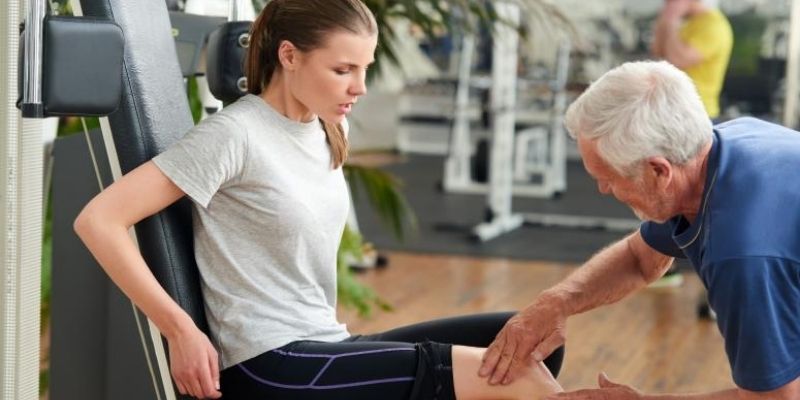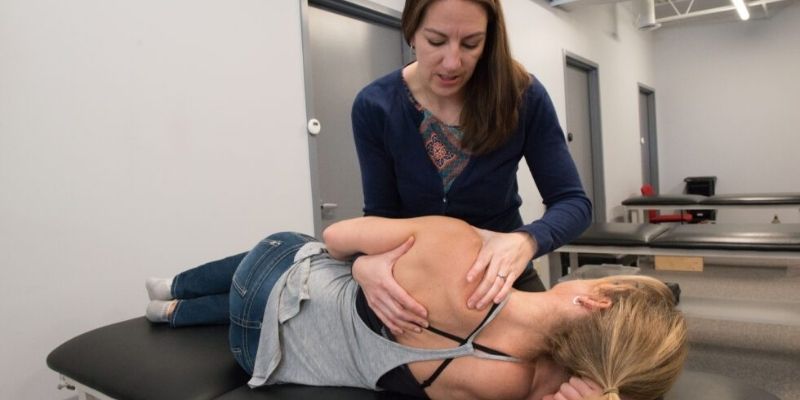Tendinosis is another systemic form of tissue disorder that commonly impacts the tendons. Tendons are the tough ropes of fibrous tissue that connect muscular tissue to bones. Whereas in the case of tendonitis, there is inflammation in the tendon. Tendinosis is a condition in which the tissues of the tendon have undergone degenerative changes as a result of overuse. Here, well discuss about symptoms of tendinosis, its causes, treatment, and different approaches to managing this condition.
What is Tendinosis?
Tendinosis is characterized by a degeneration of the collagen content of the tendons and results in pain and stiffness. It most often occurs because of excessive usage or overuse of the tendon in question for a long period without sufficient time for rest. This condition can occur in any tendon but is most commonly seen in areas such as the:
- Achilles tendon (heel)
- Patellar tendon (knee)
- Rotator cuff (shoulder)
- Tendinitides around the elbow like tennis elbow
- Wrist tendons
One reason is that the tendons do not have their own blood supply, which makes it challenging to heal the affected area, such as tendinosis. This tends to last for rather long if treated Inappropriately.
Symptoms of Tendinosis

Interventions should be early, which is possible only if the symptoms of tendinosis are observed. Common symptoms include:
Pain: Being described as a burning sensation or pain around the tendon, often worst during activity involving the tendon.
Stiffness: Stiffness or limitation of movements in the joint connected with the tendon.
Swelling: Possible rotation of the tendon, visibility of slight swelling or thickening around it.
Tenderness: Sometimes there is slight pain or discomfort, for it might have a sensitivity to touch or pressure.
Persistent Pain: Symptoms of tendinosis are different from acute injuries in that pain is more commonly of a few months duration and may worsen with exercise.
If you have these markers, particularly if they do not change in the next week or two, you should go and see your doctor for a proper assessment and management plan.
Causes of Tendinosis
The primary cause of tendinosis is a repetitive strain on a tendon. This can occur due to various factors:
Overuse:
Engaging in repetitive motions without sufficient rest can lead to degeneration.
Age:
Tendons lose elasticity and strength with age, making older adults more susceptible.
Physical Trauma:
Injuries from falls or accidents can contribute to the development of tendinosis.
Improper Technique:
Poor form during sports or exercise can put extra stress on certain tendons.
Inadequate Footwear:
Wearing shoes that do not provide proper support can lead to tendon issues, especially in the lower limbs.
Certain professions or activities that involve repetitive motionssuch as construction work, typing, or playing sportscan also increase the risk of developing tendinosis.
Differentiating Tendinosis from Tendonitis
It is important to differentiate between tendinosis and tendonitis:
Tendonitis involves inflammation and is often an acute condition resulting from sudden overload or injury. It usually resolves with rest and anti-inflammatory treatments.
Tendinosis, on the other hand, is a chronic condition characterized by degeneration without inflammation. It requires different treatment approaches since it involves tissue damage rather than just inflammation.
Treatment Options for Tendinosis

Treating tendinosis effectively requires a combination of approaches aimed at relieving pain and promoting healing. Here are some common treatment methods:
1. Rest and Activity Modification
Resting the affected tendon is crucial. Avoiding activities that aggravate the pain allows the tendon time to heal. Gradually returning to activity with modifications can help prevent re-injury.
2. Physical Therapy
Physical therapy plays a significant role in treating tendinosis. A physical therapist can develop a personalized exercise program that includes:
Stretching Exercises: To improve flexibility and range of motion.
Strengthening Exercises: To build muscle support around the affected tendon.
Eccentric Training: Focuses on lengthening muscles while they are under tension, which has been shown to aid in healing.
3. Ice Therapy
Applying ice packs to the affected area for 1520 minutes several times a day can help reduce swelling and alleviate pain during flare-ups.
4. Massage Therapy
Gentle massage around the affected area may promote blood flow and aid in recovery by reducing stiffness.
5. Bracing or Taping
Using braces or athletic tape can provide support to the affected tendon, helping to limit movement and reduce strain during activities.
6. Medications
In some cases, over-the-counter nonsteroidal anti-inflammatory drugs (NSAIDs) such as ibuprofen or naproxen can help treat pain and swelling. Nevertheless, they need to be used with caution because they do not compensate for the degeneration.
7. Advanced Treatments
For persistent cases that do not respond to conservative treatments, healthcare providers may consider advanced options such as:
Corticosteroid Injections: These are temporary, but can weaken collagen production.
Platelet-rich plasma (PRP) Injections: That's when they inject components that come from your blood into the trouble area, to promote healing.
Extracorporeal Shockwave Therapy (ESWT): Offers a non-invasive treatment of damaged tissues using pressure waves to stimulate healing.
8. Surgery
Severe cases that arent responding to conservative treatments are usually treated through surgery. This may involve removing degenerated tissue from the tendon.
Recovery Time
Recovery times for tendinosis vary based on how severe the condition is and how adherent to treatment the person is. Full recovery takes it generally several weeks to several months. A lot of recovery outcomes can be improved with consistent participation in rehabilitation exercises.
Preventing Tendinosis
Preventing tendinosis involves adopting strategies that minimize stress on your tendons:
Warm-Up Properly: Before any physical activity, it is always safe to warm up.
Use Proper Technique: Check how you are doing during exercises or sports activities.
Take Breaks: Does your work consist of repetitive motions? Take breaks quite often to rest your muscles and tendons.
Wear Supportive Footwear: Weaker boots can also help to protect lower limb tendons from strain.
Cross-Train: Use varied forms of exercises to not wear them out.
Final Words
Tendinosis is a chronic condition causing major disruption of daily activities and athletic performance. Early recognition of the symptoms and awareness of the cause are important in controlling the disease. Through a combination of rest, physical therapy, and appropriate treatment options, individuals can promote tendon healing and regain function. By adopting preventive measures, such as proper warm-ups and techniques, you can reduce the risk of developing tendinosis in the future.






